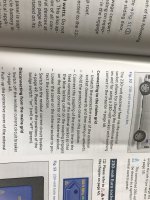Velma's Dad
Super Poster
VIP Member
But with a bit of planning you can alternate between staying on a site with hookup, then moving on to a place without - if you want to go a bit freer/wilder.
Although it's true that an external 240V hook-up will re-charge the leisure batteries to their full 100% (the vehicle alternator will only take them to 80-90%), in practice we find that when touring we never need hook-up because even a short drive during the day gives us all the battery power we're going to need for the overnight stop.
The only reason we aim to find a 'decent' campsite every two or three days is to get a proper shower. (Wet wipes only get you so far...
If you find you're depleting a substantial amount of your leisure battery charge during an overnight stay, unless you're using some pretty heavy-duty contraptions in the van you may have reached the point where your batteries are knackered and will need replacing.

















